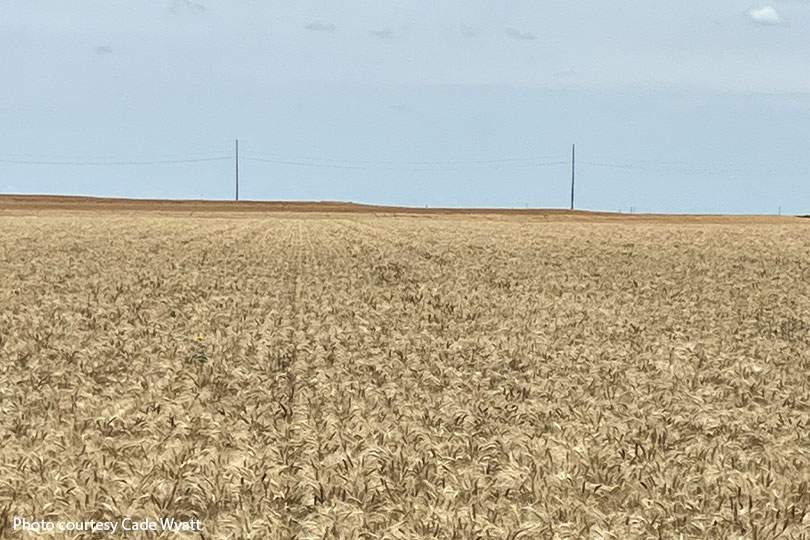By Shelby Shank
Field Editor
Wheat harvest is wrapping up across the Lone Star State but not without its share of challenges.
“We’re probably right in there about where we always are,” said Cade Wyatt, who farms and ranches in Childress. “We had a rain delay that slowed us down. Most of our wheat has been harvested, but there’s still a little left to finish up.”
Wyatt began harvesting at the end of May, about five days later than planned due to wet field conditions. Yields, however, have been anything but consistent.
“We had some hailstorms this year, which hurt some of our wheat,” he said. “We saw anything from seven or eight bushels per acre all the way up to 50. That’s a pretty big range. Our average isn’t great here, but we usually hope for 20 to 25 bushels. We ended up way above and way below that in different fields.”
Dry fall weather also contributed to a slow start for the wheat crop.
“Our wheat didn’t come up until November because it was so dry,” Wyatt said. “Then we got a lot of rain over three weeks, but after that, it was dry again through the winter. We got a good snow in March, followed by rain in the spring, which helped the crop improve.”
The quality of the crop was about average for Wyatt.
“Test weights were around 60 pounds and average protein,” Wyatt said. “It ended up being a pretty standard year. Early on, it didn’t look like it would turn out this way. Most of us didn’t fertilize. Between low wheat prices and poor conditions, it didn’t seem worth it. Then, things turned around in the spring.”
Wheat prices were lower this year than Wyatt had hoped.
“We started contracting last year at around $6 for this crop,” he said. “This year, we were hoping for $5, but most of it went in the high $4 range. That’s not really profitable. A dollar difference in price can make a big impact, especially with harvest costs.”
Wyatt said high input costs continue to be a major factor for both crops and livestock.
“Fertilizer is expensive right now, which limits how much we use,” he said. “Since we’re in a drier, more arid area without irrigation, it’s hard to justify the cost because we don’t know what kind of weather we’ll get.”
The Texas Wheat Producers Association is providing updates on wheat harvest progress. Click here to find that information.


Leave A Comment